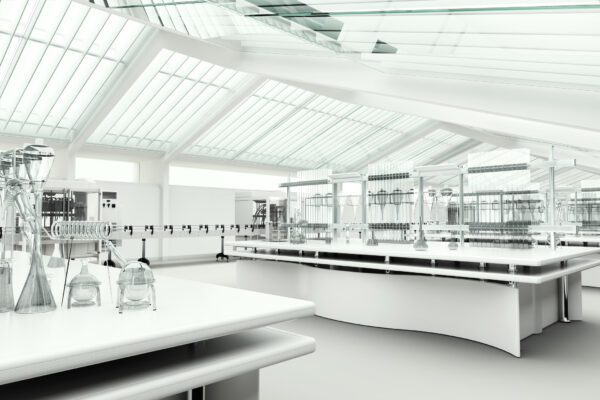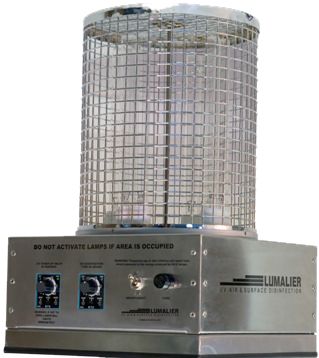UV Surface Disinfection Solutions: Enhancing Safety and Hygiene in Any Atmosphere
UV Surface Disinfection Solutions: Enhancing Safety and Hygiene in Any Atmosphere
Blog Article
Using the Possible of UV Sanitation: Safeguarding Health and Health
As the world grapples with the recurring pandemic and the continuous risk of transmittable conditions, the significance of maintaining wellness and health has never ever been more noticeable. In this context, taking advantage of the potential of UV sanitation becomes an encouraging option. UV disinfection, a modern technology commonly made use of in different industries, has actually proven efficient in eliminating unsafe microorganisms. Nonetheless, there is much even more to discover behind the science of UV sanitation and its applications. From recognizing the systems at play to applying this technology in our every day lives, this conversation aims to drop light on the possibility of UV disinfection and its role in securing our health and hygiene.
Understanding UV Disinfection
UV disinfection is a highly effective and commonly made use of approach for eliminating hazardous microorganisms and making sure health and hygiene. This technique utilizes ultraviolet (UV) light to suspend microbes by harming their DNA and stopping them from duplicating. UV sanitation is especially efficient against germs, infections, and various other bacteria that can trigger infections and diseases.
The principle behind UV sanitation is straightforward yet effective. When UV light is produced at a specific wavelength, it penetrates the microbe's cell wall surface and interrupts its hereditary material. This process, recognized as photodissociation, causes the formation of thymine dimers, which avoid the microorganism from reproducing and providing it safe. UV sanitation can be applied in numerous setups, including water therapy plants, medical care facilities, food handling markets, and air purification systems.
Among the advantages of UV disinfection is its ability to properly and effectively get rid of a large range of virus without the requirement for additives or chemicals. Unlike various other disinfection approaches, such as chlorine or ozone, UV disinfection does not present damaging by-products or chemical deposits into the setting. Furthermore, UV sanitation is a non-contact process, which suggests that it does not need physical call with the microorganisms, decreasing the danger of cross-contamination.

The Scientific Research Behind UV Disinfection
The performance of UV disinfection depends on its capacity to disrupt the hereditary material of bacteria, providing them unable to duplicate and therefore eliminating their damaging possibility. UV, or ultraviolet, radiation is a form of electromagnetic radiation with wavelengths much shorter than noticeable light. It is categorized into 3 kinds: UV-C, uv-a, and uv-b. UV-C radiation, specifically, has the quickest wavelength and the greatest power. This high-energy UV-C radiation is most effective in disinfection applications since it can pass through the cell wall surfaces of microorganisms and damage their DNA or RNA.
When bacteria are subjected to UV-C radiation, the energy is taken in by their genetic material, triggering bonds to damage and creating chemical responses that disrupt their ability to replicate. This prevents the microorganisms from reproducing and spreading infection. UV disinfection is specifically reliable versus viruses, bacteria, and fungi, consisting of usual virus such as Escherichia coli, Salmonella, and Flu.
The scientific research behind UV sanitation is supported by substantial study and research studies. It has been shown that direct exposure to an adequate dosage of UV-C radiation can accomplish a high degree of disinfection, commonly surpassing 99.9% efficiency in eliminating microbes. It is important to keep in mind that the efficiency of UV sanitation depends on numerous elements, including the strength of UV-C radiation, direct exposure time, distance from the UV source, and the susceptibility of the microbe to UV radiation (uv surface disinfection).
Applications of UV Sanitation
Given the comprehensive research and efficiency of UV sanitation in disrupting the genetic material of microbes, it is crucial to check out the numerous sensible applications of this modern technology. UV sanitation has actually shown to be a valuable device in a vast array of industries where keeping a secure and clean setting is important.
One major application of UV sanitation is in health care settings. UV light can be used to disinfect surface areas, tools, and even the air in healthcare facilities and clinical centers. This aids to decrease the threat of healthcare-associated infections and makes sure a much safer atmosphere for patients and healthcare workers.
Another important application remains in the food and beverage market. UV disinfection is used to treat water and eliminate unsafe microorganisms, such as E. coli and Salmonella, from the production process. uv surface disinfection. This makes sure the safety and security and quality of the products we consume
UV sanitation is additionally extensively used in water therapy plants and wastewater treatment centers. It is an efficient method for destroying dangerous microorganisms, infections, and parasites that can be present in water sources. This helps to give secure and clean drinking water to neighborhoods and secure the atmosphere from air pollution.
In addition, UV sanitation is employed in the pharmaceutical sector to sterilize devices and keep the honesty of products. It is also utilized in find out research laboratories and research facilities to stop contamination and guarantee exact outcomes.
Advantages of UV Sanitation Technology
One noteworthy benefit of utilizing UV disinfection innovation is its capability to effectively remove microorganisms without making use of severe chemicals. This is especially helpful in different setups, such as healthcare facilities, water treatment plants, and food handling markets, where the visibility of hazardous microorganisms poses a significant danger to public health and safety.
Unlike conventional disinfection techniques that count on chemicals like chlorine or ozone, UV sanitation innovation makes use of ultraviolet light to target and destroy the DNA of microorganisms, successfully neutralizing their capability to reproduce and trigger infections. over at this website This process not only removes the requirement for potentially hazardous chemicals but also lowers the threat of chemical deposit or by-products staying in the treated environment.

Furthermore, UV disinfection technology is eco-friendly. As it does not count on using chemicals, it gets rid of the need for their transport, production, and disposal, reducing the total carbon impact related to disinfection processes. In addition, UV sanitation systems have a longer life-span contrasted to chemical-based approaches, leading to less frequent substitute and further minimizing waste.
Implementing UV Sanitation in Daily Life
To properly execute UV disinfection in day-to-day life, organizations and people can include mobile UV sterilizing tools right into their health regimens and cleansing methods. These tools are created to emit ultraviolet light, which has been confirmed to kill or inactivate a wide variety of microorganisms, including infections, fungis, and microorganisms. By using portable UV sterilizing gadgets, individuals can sanitize typically touched surfaces and items, such as cellular phone, laptops, doorknobs, and secrets, lowering the danger of spreading out germs and infections.
In addition to incorporating mobile UV disinfecting gadgets, it is necessary to follow appropriate standards and referrals for efficient UV sanitation. This consists of making sure that the device is made use of properly and for the advised period to attain ideal sanitation outcomes. It is also essential to focus on precaution, such as putting on safety eyeglasses and avoiding direct exposure of the UV light to the skin.

Additionally, companies can apply UV disinfection innovation in numerous setups to boost hygiene practices. For example, medical facilities and healthcare centers can make use of UV sanitation robotics to sterilize patient spaces, operating theaters, and other high-touch locations. Food handling sectors can incorporate UV sanitation systems right into their assembly line to boost food security and stop contamination.
Conclusion
In verdict, UV disinfection modern technology holds terrific possible news in protecting wellness and hygiene. By using the power of ultraviolet light, it effectively removes harmful bacteria and lowers the threat of infections. This technology can be used in various settings, such as healthcare facilities, water treatment centers, and public rooms, offering a secure and efficient technique of disinfection. With its many advantages, UV disinfection is a beneficial device for preserving a healthy and balanced and tidy atmosphere.
Unlike various other sanitation approaches, such as chlorine or ozone, UV disinfection does not present unsafe byproducts or chemical residues into the environment. It is vital to note that the performance of UV disinfection depends on various elements, including the strength of UV-C radiation, direct exposure time, distance from the UV source, and the vulnerability of the microbe to UV radiation.
One more benefit of UV disinfection innovation is its ability to give fast and continual sanitation. Unlike guidebook cleansing approaches, which can be taxing and need considerable labor, UV sanitation systems can be automated and run constantly, making sure constant sanitation without human intervention.To properly execute UV sanitation in day-to-day life, people and organizations can integrate mobile UV disinfecting tools into their health regimens and cleaning up techniques.
Report this page